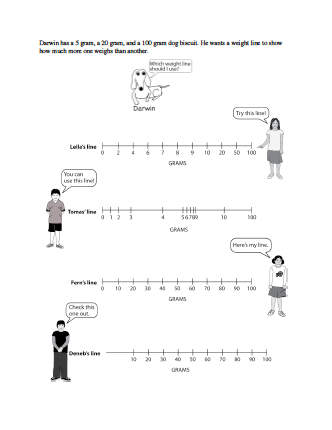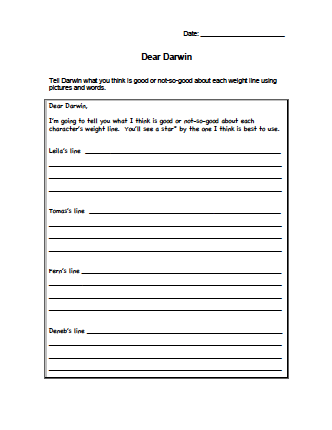Weight Line Concept Cartoon
This cartoon was developed to assess students' ability to:
- Understand that on a measure line the numbers represent units of measure (weight in grams)
- Identify the characteristics of a weight line for accurately displaying the differences in the weights of objects
This cartoon is part of Investigation 2.2, What makes a good weight line?
Students become more aware of the pros and cons of each weight line when they try to locate all four dog biscuits on each of the lines.
Things to look for in student responses
Do students recognize the characteristics of a useful and accurate weight line?
- Most students will tell Leila that the increments marked off on her weight line do not represent equal amounts of weight. The same distance between two marks may equal 2g or 1g or 10g, 30g, or 50g. On this line a 100g dog biscuit looks just a bit heavier than a 20g biscuit when it is actually five times heavier.
- Students are likely to explain to Tomas that his line is not divided into equal increments and that spaces between one "tick mark" and another vary in size and it's therefore hard to compare weights.
- Students are likely to explain to Fern that they like her line best. They may note that it starts with a zero, has a spot for all the data including the heaviest dog biscuit (100g), is divided into equal increments, and each segment equals the same amount - 10g.
- Students may tell Deneb that his line has all the attributes of Fern's only it lacks a zero. Without the zero, it is hard to locate the 5g biscuit on the line. When they add a zero, students may place the mark at the start of the line, making the distance between 1-10 greater than all other 10g lines segments. Or, they may locate the zero so the distance from 0-10 is equal to the other 10g segments (with Fern's line as a model!)





